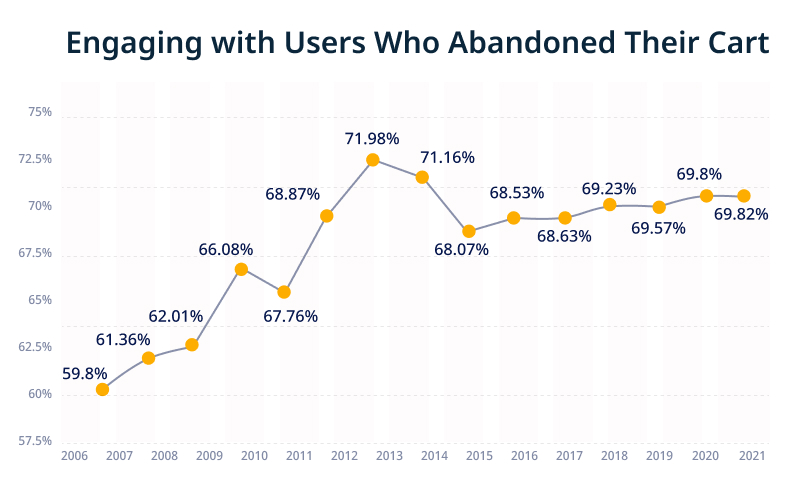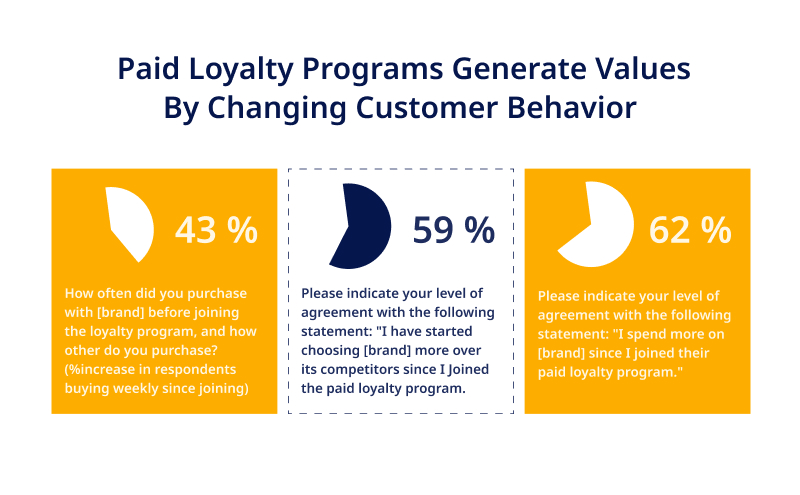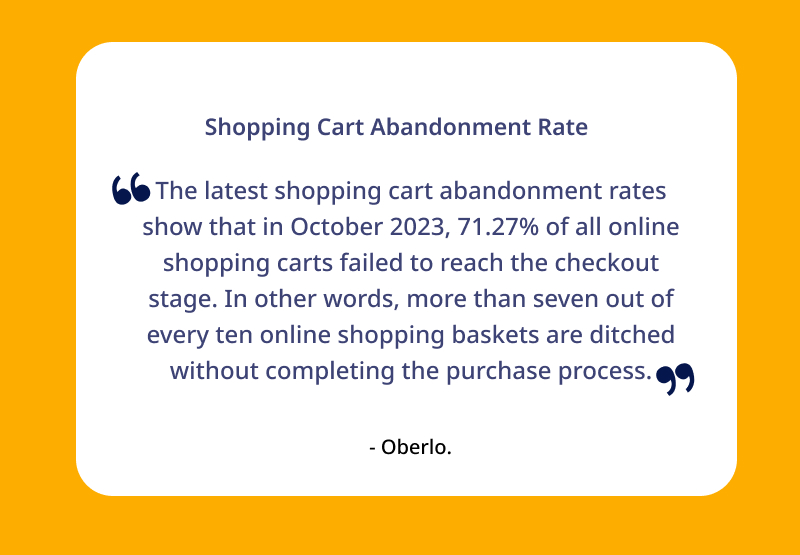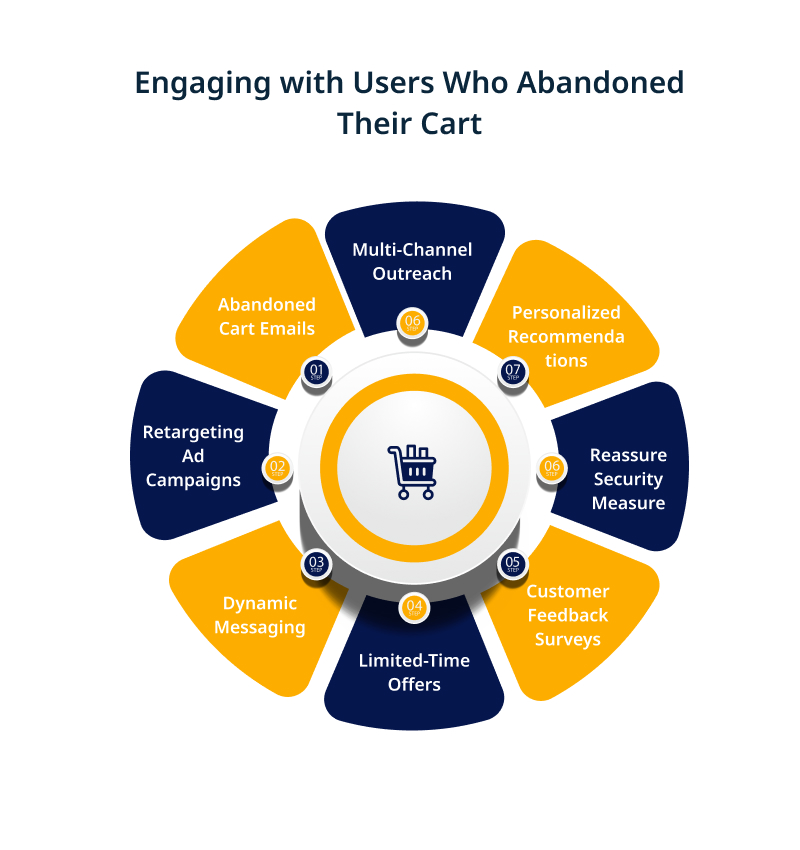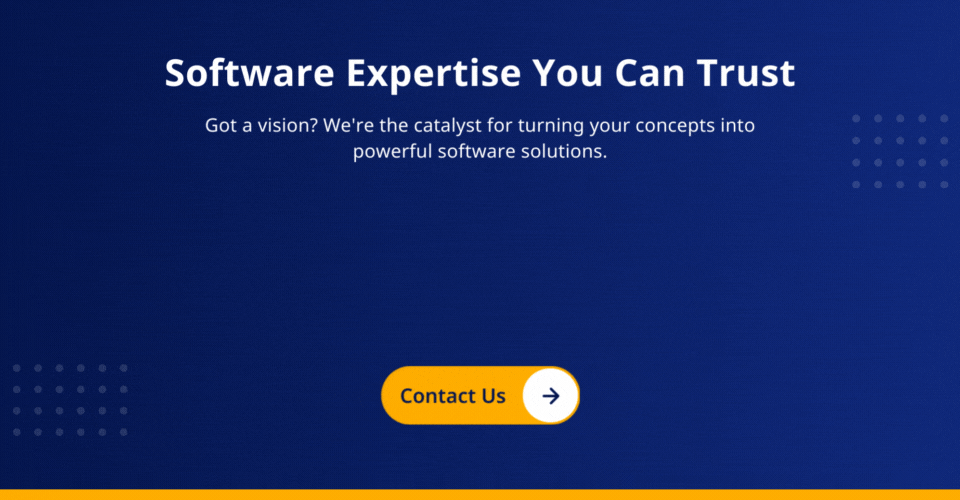Are your eCommerce sales being hindered by a confusing checkout process?
For many buyers, a difficult or lengthy checkout flow is enough reason to ditch their online carts before completing a purchase.
Research shows up to 70% of orders are abandoned at checkout, resulting in missed revenue opportunities.
But why is checkout such a common friction point, and what can sellers do to streamline this process?
Buyers abandon their carts because of the lack of convenience and clarity in the final steps.
Shopping often requires approval workflows, contract reviews, and complex billing – extra obstacles that consumer purchases don’t face.
If the checkout process doesn’t facilitate these needs efficiently, customers will look for easier purchasing alternatives.
By optimizing fields, payment options, and mobile experience at checkout, eCommerce sites can guide buyers seamlessly from product selection through order confirmation and reduce cart abandonment significantly.
In this blog post, we’ll share some top strategies and examples for your eCommerce platform’s checkout optimization.
Applying these best practices can help your website remove checkout friction, saving your sales team time while accelerating deal closure through higher conversion rates.
Read on to transform the final yet critical stage of your customer’s online journey.
Also read: Top ECommerce Development Companies In India To Change Business Fortunes
Understanding Cart Abandonment
Have you ever added items to your online shopping cart only to abandon it before completing the purchase?
You’re not alone. Cart abandonment is a common hurdle in the world of online retail.
Let’s understand what it means and how businesses can tackle this challenge.
What is Cart Abandonment?
Cart abandonment occurs when a potential customer adds products to their online shopping cart but leaves the website without completing the purchase. It’s like window shopping in a physical store but walking out before reaching the cash register.
Key Reasons for Cart Abandonment
Here are some of the key reasons for cart abandonment. Let’s look at them:
- Unexpected Costs: Hidden fees during checkout.
- Complicated Checkout Process: Lengthy or confusing steps.
- Concerns about Security: Trust issues with payment methods.
Why Does It Matter?
If there is an increased number of cart abandonments, it’s a matter of concern.
- Revenue Loss: Uncompleted purchases mean missed sales.
- Customer Frustration: Negative impact on user experience.
- Lost Opportunities: Potential long-term customers slipping away.
Here are some of the Optimized Checkout Strategies
Implementing strategies for a streamlined payment process can significantly reduce cart abandonment. Here’s how:
- Transparent Pricing: Display all costs upfront.
- User-Friendly Checkout: Simplify the process to enhance user experience.
- Security Assurance: Build trust with secure payment methods.
Understanding and addressing cart abandonment is crucial for success. By adopting optimized checkout strategies, businesses can boost conversion rates and create a more satisfying customer shopping experience.
Learn how ValueCoders' eCommerce expertise transforms checkout experiences.
Key Components of the Checkout Process
The checkout process is the final frontier in the online shopping process, and its design can significantly impact whether a potential customer becomes a satisfied buyer.
Let’s decode the key components for a seamless and effective checkout experience.
- Streamlined Payment Process: A streamlined payment process is the linchpin of successful checkouts. It ensures that customers smoothly transition from selecting items to completing the purchase, minimizing friction and frustration.
- Transparent Pricing: Communicate all costs associated with the purchase up front. Unexpected fees can be a major customer turnoff and lead to abandoned carts.
- User-Friendly Checkout: According to a post by Google, a 1-second delay in load time during checkout results in a 7% drop in conversions (Google research). So, keep it simple. An intuitive and straightforward checkout process reduces the chances of customers abandoning their carts due to confusion or complexity.
- Security Assurance: Build trust by prioritizing secure payment methods. Assure customers that their sensitive information is protected, alleviate concerns, and encourage them to complete the transaction.
- Mobile Optimization: Given the prevalence of mobile shopping, ensure that your checkout process is optimized for various devices. 41% of customers abandon orders if a mobile device’s checkout process is too complex. A mobile-friendly design enhances accessibility and caters to a broader audience.
Also read: A Comprehensive Guide To Launch ECommerce Business
In eCommerce, where every click matters, checkout conversion tips are invaluable.
They guide the development of eCommerce web portals, ensuring a user-friendly interface that seamlessly integrates B2C eCommerce solutions.
The expertise of eCommerce web design services is crucial in weaving together these components for a checkout experience that converts visitors into customers and leaves them satisfied with their online purchases.
As businesses get into eCommerce web portal development, prioritizing these components will undoubtedly pave the way for success in the competitive online marketplace.
Learn how ValueCoders' retail solutions minimize the cart abandonment.
Tools and Technologies for Checkout Optimization
Amidst the constant evolution of eCommerce trends, staying ahead requires leveraging cutting-edge tools and technologies to optimize the checkout process.
Let’s look at the key elements that can elevate your online store’s checkout experience.
- Payment Gateways: Integration with reliable payment gateways is foundational for a streamlined payment process. Choose gateways that support various payment methods to cater to a diverse customer base.
- Analytics and Tracking Tools: Harness the power of analytics to gain insights into user behavior during the checkout process. Identify bottlenecks, understand customer preferences, and refine your strategy based on data-driven decisions.
- A/B Testing Platforms: A/B testing is a powerful technique to experiment with different checkout page designs. Utilize A/B testing platforms to compare variations, optimizing for the best conversion rates.
- Responsive Design Tools: Given the rise of mobile shopping, ensure your checkout process is mobile-friendly. Responsive design tools aid in creating interfaces that seamlessly adapt to different devices, enhancing accessibility.
- eCommerce Consulting Services: Engage eCommerce consulting services to gain expert guidance on the latest trends and best practices. Consultants can offer tailored strategies to enhance the overall eCommerce web portal development, including eCommerce solutions.
- eCommerce Web Design Services: Enlist the expertise of eCommerce web design services to create visually appealing and user-friendly checkout pages. Professional design ensures a cohesive and pleasant experience, increasing conversion rates.
Integrating these tools and technologies is paramount in the ever-changing realm of online eCommerce.
From streamlined payment processes to incorporating checkout conversion tips, each element is crucial in optimizing the checkout experience.
By adopting eCommerce consulting services and leveraging eCommerce web design services, businesses can navigate the complexities of checkout optimization and stay competitive in the digital marketplace.
See the impact of our eCommerce software development on reducing cart abandonment rates.
Case Studies and Examples
Numerous eCommerce trailblazers have successfully transformed their checkout experiences, paving the way for substantial reductions in cart abandonment rates.
Let’s explore a few standout examples:
- Amazon is renowned for its user-centric approach. It has curated a seamless checkout process. With features like one-click checkout and pre-filled information, they’ve achieved an industry-leading cart abandonment rate below 2%.
- Zappos: Putting customer experience at the forefront, Zappos ensures simplicity, transparency, and security in their checkout. Free shipping and returns further enhance the process, contributing to a commendable cart abandonment rate of around 13%.
- ASOS: The online fashion giant ASOS prioritizes a straightforward checkout. Progress indicators, real-time order tracking, and diverse payment options create a clear and intuitive experience, reflected in their approximately 17% cart abandonment rate.
These real-world instances highlight the substantial impact of optimizing the checkout process on reducing abandonment rates and bolstering conversion rates.
Also read: 7 Key Factors To Consider For Measuring E-Commerce Success
Additional Tips for Reducing Cart Abandonment Rates:
- Offer Guest Checkout: Allow customers to breeze through without creating an account.
- Display Product Thumbnails: Remind customers of their chosen items throughout the checkout.
- Include Progress Indicators: Keep customers informed about their checkout journey.
- Transparent Cost Breakdown: Display all fees upfront to avoid surprises.
- Highlight Total Savings: Showcase applied for discounts or promotions.
- Provide Multiple Payment Options: Cater to diverse customer preferences.
- Clear Error Messages: Assist customers in swiftly resolving any issues.
- Optimize for Mobile: Ensure a seamless checkout across all devices.
- A/B Test Checkout Designs: Identify the most effective approach for your unique business.
- Implement Retargeting Campaigns: Reconnect with customers who’ve abandoned their carts.
By incorporating these insights into their strategies, eCommerce businesses can authentically optimize their checkout processes, mitigate cart abandonment, and drive increased sales and revenue.
Learn how ValueCoders' retail solutions elevate your brand's checkout game.
Customer Trust and Security
Ensuring customer trust and security is paramount when optimizing the checkout process in eCommerce web portal development.
Building a secure environment prevents cart abandonment and fosters long-term customer relationships.
Here’s how to instill confidence in your customers:
- Secure Payment Methods: Implement reliable and well-known payment gateways. Provide multiple payment options for customer convenience.
- Trust Badges and Seals: Display trust badges from reputable security providers. Highlight certifications and security measures visibly on the checkout page.
- Transparent Policies: Communicate your refund, return, and privacy policies. Provide detailed information on how customer data is handled and protected.
- SSL Encryption: Ensure your website uses SSL encryption for a secure connection. Display a padlock icon in the address bar to signify a safe environment.
- Responsive Customer Support: Offer accessible customer support channels for query resolution. Provide real-time assistance during the checkout process.
- Cart Abandonment Prevention Strategies: Utilize cart abandonment prevention tools to re-engage customers.
Implement personalized follow-up emails addressing concerns or offering incentives.
Customer trust is the cornerstone of success in retail and eCommerce software development.
Customers need assurance that their sensitive information is handled with care.
eCommerce service companies in India specializing in optimizing checkout processes play a pivotal role in implementing these security measures.
By prioritizing these elements in checkout page optimization, businesses prevent cart abandonment and position themselves as trustworthy partners in the online shopping journey.
When customers feel secure, they are more likely to complete transactions and become repeat buyers, contributing to the sustained growth of your eCommerce venture.
Also read: Elevating ECommerce With Predictive Analytics
Personalization in the Checkout Process
Creating a personalized checkout experience is a powerful strategy when delivering eCommerce development services.
Tailoring the journey to individual preferences enhances user satisfaction and increases conversion rates.
Here’s how to infuse personalization into your checkout process:
- User-Friendly Payment Flow: Customize the payment flow based on user behavior and preferences. Allow users to save preferred payment methods for quick and easy future transactions.
- Optimized Checkout Strategies: Display personalized product recommendations during checkout. Tailor promotions and discounts based on user history and shopping patterns.
- Personalized Messaging: 62% of customers say a loyalty program offering incentives motivates them to complete online purchases and checkout (Emarsys)
Greet returning customers and acknowledge their loyalty. Provide real-time updates on order status, creating a personalized communication loop.
- Streamlined User Accounts: Users can personalize their profiles with saved addresses and preferences. Simplify the process for returning customers by enabling quick reorders.
In the domain of eCommerce services in companies in India, personalization is a cornerstone of providing exceptional customer experiences.
By implementing these personalized touches, businesses can go beyond a generic checkout process, making each interaction feel tailor-made for the individual.
As businesses focus on optimized checkout strategies and the continuous effort of optimizing the checkout process, integrating personalization boosts customer satisfaction and fosters brand loyalty.
A user-friendly payment flow that caters to individual preferences ensures every customer feels seen and valued, contributing to a seamless and memorable online shopping experience.
Also read: Interesting ECommerce Facts To Help Your Business
Communicating with Abandoned Cart Users
Reconnecting with users who have abandoned their shopping carts is a strategic approach that can turn potential losses into opportunities.
Effectively communicating with these users can provide insights, address concerns, and encourage them to complete their purchases.
Here’s a guide on how to communicate with abandoned cart users:
- Timely Email Campaigns: Send reminder emails! Promptly remind users about the items left in their cart. Another way is by highlighting a sense of urgency by mentioning limited stock or time-sensitive promotions.
- Personalized Messaging: Addressing concerns is one of the most important! Inquire about any issues or concerns that led to the abandonment. What else? Recommend related products by suggesting complementary items based on the abandoned cart contents.
- Incentivize Return: We all love discounts, don’t we? So, provide exclusive discounts or promotions to reward completion. Consider offering free shipping for items left in the cart.
- User-Friendly Contact Options Implement live chat for immediate assistance during checkout. Ensure users can easily find contact details for assistance.
Also read: How To Build A Remote Team For ECommerce Development: Tips And Strategies
eCommerce service companies in India understand the importance of strategic communication with abandoned cart users.
Hire eCommerce developers to enhance the implementation of these communication strategies, ensuring a seamless and effective re-engagement process.
By adopting these practices, businesses recover potentially lost sales and demonstrate a commitment to customer satisfaction.
Clear and personalized communication can turn abandoned carts into completed transactions, fostering positive customer experiences and building long-term loyalty.
Experience the ValueCoders advantage in crafting checkout processes that keep customers engaged.
Continuous Testing and Improvement
An optimized checkout process is an ongoing evolution in the dynamic landscape of retail and eCommerce software development.
Continuous testing and improvement are the cornerstones that propel businesses toward greater efficiency and enhanced user experiences.
Here’s how to adopt this iterative approach:
- Regular Performance Analysis: Continuously track key performance indicators (KPIs) related to the checkout process. Identify bottlenecks and pinpoint areas where users may encounter friction or drop-offs.
- A/B Testing for Optimization: Conduct A/B tests to compare different versions of checkout pages. Implement changes based on test results to optimize user flow.
- User Feedback Integration: Surveys and feedback forms help collect user opinions and insights directly. Act on constructive feedback to enhance the checkout experience.
- Technology Updates: Keep abreast of the latest retail and eCommerce software development technologies. Implement relevant updates to improve security, speed, and overall functionality.
- Collaborate with Development Teams: Cross-functional teams foster collaboration between developers, designers, and UX specialists. Adopt agile methodologies for quick, adaptive development cycles.
Continuous testing and improvement form a cyclical process in pursuing optimized checkout strategies.
This approach eliminates persistent issues and allows businesses to stay responsive to evolving customer expectations.
By regularly refining the checkout experience based on performance data and user feedback, businesses can create a seamless, efficient, and customer-centric process that contributes to higher conversion rates and sustained success.
Let ValueCoders be your guide in creating a checkout experience that converts browsers into buyers.
Key Takeaways
Creating an excellent checkout experience in eCommerce is an ongoing process. From learning about cart abandonment to personalizing and constantly improving, businesses navigate a changing landscape.
Retail and eCommerce software development is crucial for success in a competitive market.
Following strategies from successful companies like ValueCoders, listening to users, and consistently refining processes help reduce cart abandonment and build customer loyalty.
A commitment to accessible, secure, and personalized checkouts is the key to long-term success in retail and eCommerce software development.
Adopting the ethos of successful eCommerce services companies in India, the focus extends beyond mere transactions on the checkout page.
It represents an invaluable opportunity not just to complete a sale but to evoke customer satisfaction and fortify the foundations for sustained business prosperity.
Remember, the checkout page is not just for transactions; it’s a chance to make customers happy and keep businesses thriving.


